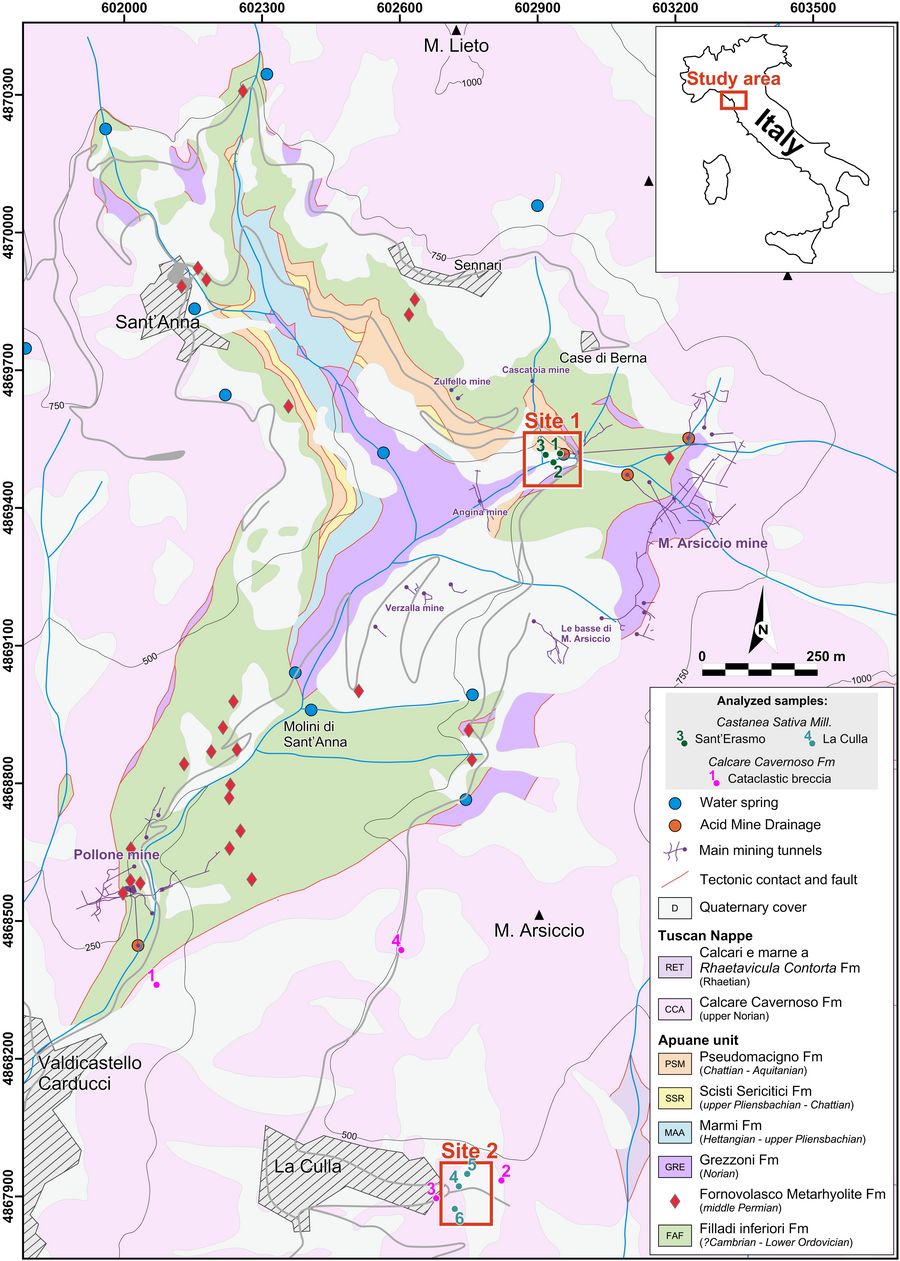Potential of Castanea sativa for biomonitoring of mining district
The Apuan Alps (northern Tuscany) are characterised by different ore-types were discontinously exploited, until the end of the 1980s. When mining activities ceased, scientific interest in these ore deposits has also declined considerably. Recently, the area have been the subject of renewed scientific interest due to the discovery of a significant thallium (Tl) anomaly in baryte, pyrite and iron oxide mineralisations and the presence of this element in the public aqueduct of Valdicastello Carducci-Pietrasanta.
Researchers from the Institute of Geosciences and Earth Resources together with colleagues from the Research Institute on Terrestrial Ecosystems - CNR and the Department of Agriculture, Food, Environment and Forestry of the University of Florence have identified how chestnut trees (Castanea sativa Mill.) can absorb and accumulate potentially toxic metals and metalloids and, therefore, be used for environmental monitoring of potential areas at environmental risk, such as mining sites. It is interesting to note that chestnut trees provided chemical data consistent with the ones of the bedrock, suggesting to possibly identify geochemical anomalies in rocks, which have not yet been identified.
The research opens a new perspective on the use of trees also for mining prospecting or archaeological purposes. It also highlights the role of geological studies, from field survey to geochemical analyses, and the relationship with ecosystems in managing natural resources and environmental concerns.
Bibliographic reference
Traversari, S.; Cocozza, C.; Vannucchi, F.; Rosellini, I.; Scatena, M.; Bretzel, F.; Tassi, E.; Scartazza, A.; Vezzoni, S.; 2024. Potential of Castanea sativa for biomonitoring As, Hg, Pb, and Tl: A focus on their distribution in plant tissues from a former mining district. Science of The Total Environment, 947(174446) https://doi.org/10.1016/j.scitotenv.2024.174446
For information: Silvia Traversari, CNR-IRET (silvia.traversari@cnr.it); Simone Vezzoni, CNR-IGG (simone.vezzoni@igg.cnr.it).
